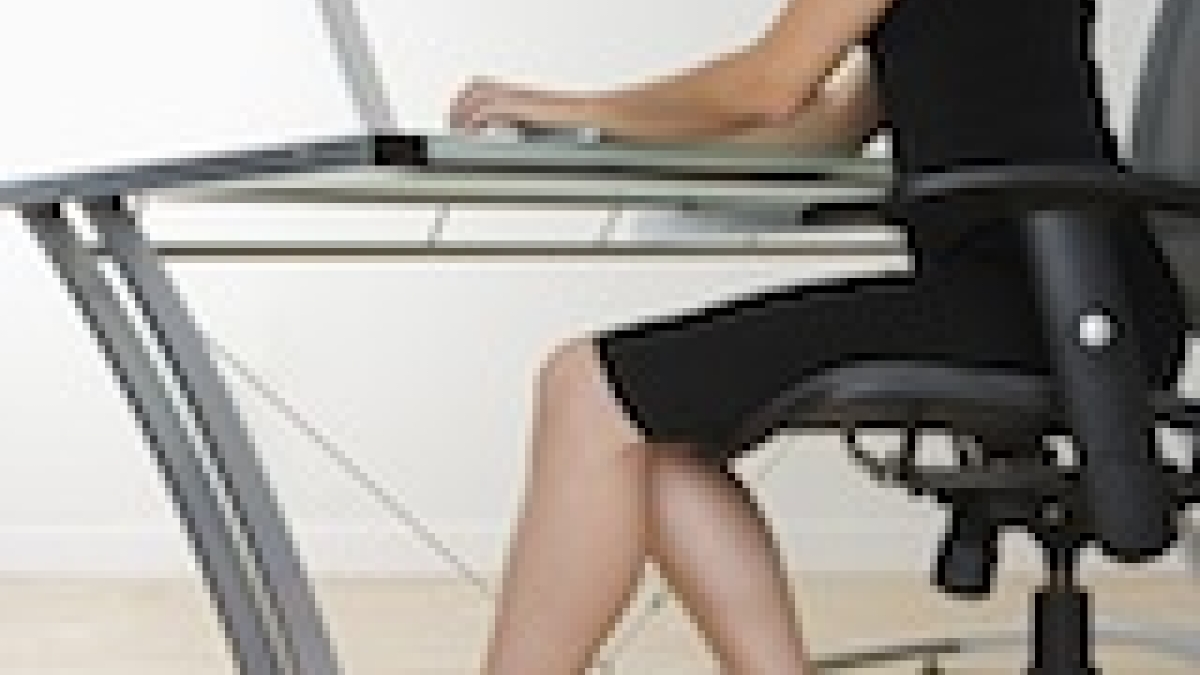ASU ergonomics site addresses proper workplace practices

People are increasingly involved with their machines from computers to iPhones.
This can translate to workplaces where some people develop issues from repetitive use, most often involving muscular-skeletal problems.
Arizona State University’s Environmental Health and Safety Department is working to help employees and students avoid injuries while teaching improved posture, stretching and varying tasks among other issues.
“It’s important to work on a computer in a safe manner,” said Robert Ott, Environmental Health and Safety assistant director.
The ASU Ergonomics site has undergone a recent redesign with interactive features as well as tips, resources and assistance information for those who need help making their workstations user friendly. Sections on back safety, exercise and wellness, injuries and prevention and laboratory and office ergonomics are among the topics covered on the site.
“It’s not one size fits all,” Ott said.
Adjustments that can make working more comfortable can be as simple as adjusting a chair’s height or moving keyboard trays and monitors.
Taking breaks from computer use is key to avoiding issues like eye strain and stiffness that results from sitting for too long. Simply getting up to do easy stretching exercises and practicing proper posture can do a world of good in preventing injuries.
“It’s important to get up periodically. Taking a 15-minute break every two hours away from the computer to do a different task is a good way to vary activity,” Ott said.
Students can benefit from simple modifications of their practices such as taking a break from their laptops and practicing good posture while using a computer.
“Laptops can be set up anywhere, so they are not conducive to good posture and laptops don’t have wrist rests,” Ott said.
Employees who are experiencing persistent problems may request an ergonomics assessment that examines complaints and addresses causes. Issues could include things like scrunching shoulders when answering the phone, not having enough room underneath a desk and having a chair that can’t be readily adjusted.
“They may have piles of wires everywhere,” said Mary C. Smoczynski, who conducts ergonomic assessments through her company, Strategic Safety Planning Inc.
During a workstation assessment, Smoczynski takes measurements to see how high the desk is and where the keyboard and mouse are located. Photos are taken of the person working and she plans to start shooting videos. Problems are addressed during the assessment if possible, and recommendations are made to address the issue such as getting a new chair if that solves the problem.
“Some people have long torsos. You need a chair that accommodates a long torso,” she said.
Sometimes the solution is as easy as adjusting a workstation’s height, rearranging the desktop and doing different things throughout the day that require movement.
“Varying your task throughout the day is very important,” Smoczynski said. “When I’m doing assessments, I find that people don’t take breaks. If you sit too long, it’s bad for your circulation. We want people at desks to change postures during the day so you’re not in a static position.”
Taking breaks mentally and physically is good for employees whose schedules permit taking time to walk outside and enjoy ASU’s campuses.
“The campuses are really beautiful. That’s why I really stress to get out and get some fresh air and mentally get away and take a break,” she said.
In the absence of a full ergonomics review, an easy way to assess workstations is to simply ask a co-worker to view how someone is sitting, if they are stretching their neck out to see their monitor or perhaps hunching their shoulders.
“Little adjustments are great. If it’s a little complaint, it’s better to do something now then go to physical therapy or go on anti-inflammatories later,” she said.
In addition, university employees can sign up for the Office Safety Program to learn more about good ergonomic practices and other tips for running a secure, productive office.